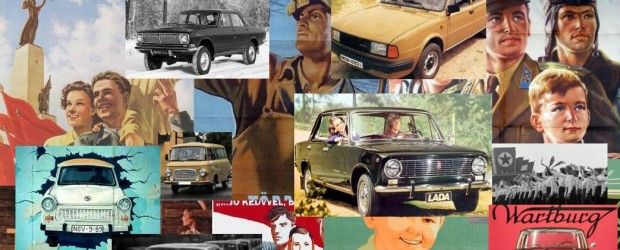The Trabant P50 is the first type of model of Trabant Sachsenring in Zwickau. By August 1958, the models were still wearing the name EEZ P50 "Trabant". Later the car to distinguish it from its successors was also known as "Trabant 500". Type P50 1958-1962 Total 128 248 cars were built. The name means P50 passenger cars with 500 cc displacement. The Trabant P50 was one of the first full-fledged small car with front wheel drive and corresponded to a time trend in the development of automobiles.

History
Working on a first prototype of the P50 began in 1953 in VEB research and development work of Karl-Marx-Stadt. To make the vehicle easier (and to avoid the steel embargo of Western States), the first time was a plastic, called thermosetting plastic, used for paneling of the car. However, as the experience with the new material was low, the body of this prototype was, however, still largely made of steel. However, the car was too small for the specification adopted by the Council of Ministers, the P50 was to provide a family of four square. In 1955 the project to the VEB automobile factory "Audi" Zwickau was issued. When EEZ, it was decided first to build a "intermediate type" in order to gain experience for the mass production of the P50. This intermediate type was the EEZ P70, which was built by 1955 until 1958. Mid-1950s, there was still no clarity on the right small car concept. Experiments with cabin scooters and other small vehicles have been rejected in the GDR from the beginning as not effective. It said the concept of a full-fledged small car was targeted. On the way there you was based on the Lloyd-vehicles only had a small trunk for them to be considered as a full small car. In 1956 the work on the P50-examination, the final form shapes was soon found. Unlike in the GDR common type of P50 [1] were published well before the start of production photos of prototypes and specific technical descriptions. According to a wooden model in 1:1 scale was adopted on 23 October 1956, the first prototype presented. Meanwhile, a name was found: Trabant ("companion"). A pilot run of 50 cars was produced in November, 1957.
As the capacities were assessed in EEZ to be too low to produce the Trabant in large series, became the first EEZ May 1958 merged with the VEB Sachsenring new VEB Sachsenring Zwickau car. On 10 July 1958 was able to begin mass production. In the same year, three more prototypes were presented: A combination vehicle, a coupe and a sedan full view. Of these types, only the combination was realized.
In model year 1959, the satellite experienced some changes: The type P50 / 1 now had the so-called "Z" engine with 15 kW (20 hp) and Alfer cylinders and the new carburetor 28 HB 1-1. The translation was changed to 4.33. Also in 1959 a series of zero Trabant Kombi was made, its serial production began in January of the following year.
In May 1962, a new engine was again presented: The type P50 / 2 with modified flywheel and a new crankshaft. This engine was built but only until October in 1962. In July of the same year a new drive has been developed, which had a capacity of 594.5 cc now. The vehicles with this engine were designated Trabant 600
Trabant 600 was the sales name of the second version of the Trabant. The car with the internal designation Type P60 was built from 1962 to 1964, station wagon and vans until 1965, at VEB Sachsenring auto plant in Zwickau. Was obtained as the two-door sedan and station wagon version with a large tailgate, as well as vans and a so-called combined camping with reclining and sliding roof.

The P60 was the successor of the Trabant P50. There were only minor changes, the most significant was the increase in performance. Thus, the 2-cylinder 2-stroke engine developed with the now 599 cc in 600 cc 23 hp (16.92 kW). The thermoset body on steel frame remained unchanged, the Trabant 600 is outwardly distinguished only by the almost 600 at the tail of its predecessor.
As a "special request" there was trim, sun visor, which was mounted on the outside of the windshield and chrome on the bumpers. Optional was a hitch for towing loads up to 200 kg can be purchased. Likewise was - just like the Kombi - a roof rack (50 kg Roof load) option. In the vernacular, it was partly because of its circular design the nickname "Kugelporsche".
The wagon:


